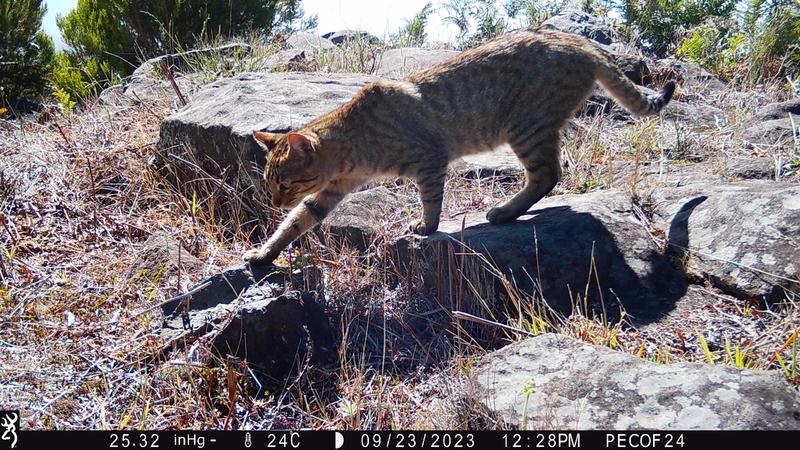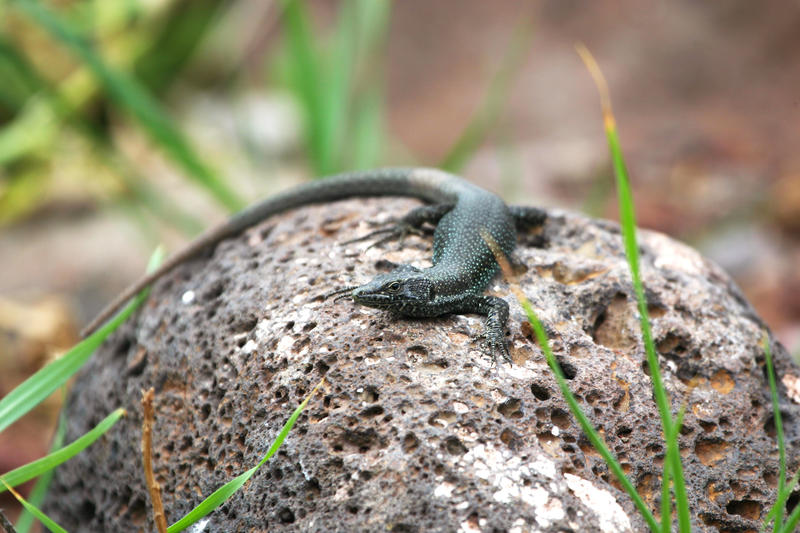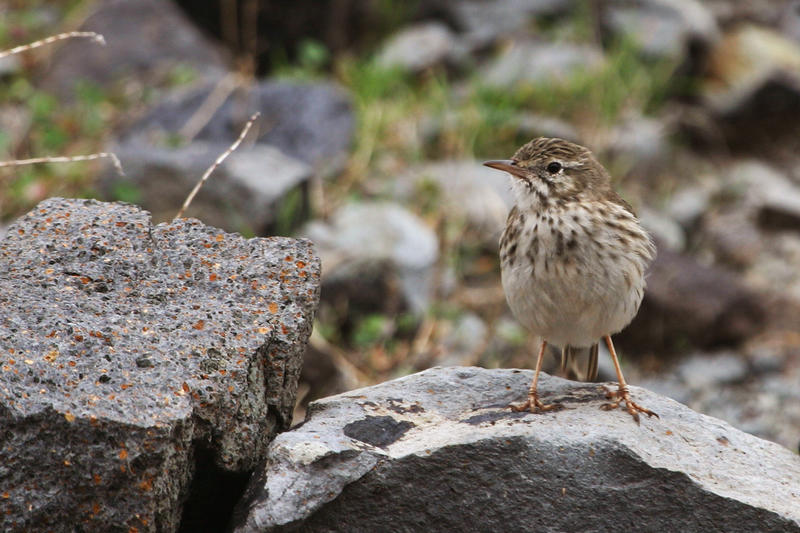Free-ranging cats are widespread predators which rank in the top 100 worst invasive species*. Whether owned or feral, their impacts on native species can be harsh, particularly in isolated ecosystems like islands where native prey tend to have no natural mammal predators.
Across Macaronesia, the Portuguese, Spanish, and Cape Verdean archipelagos across the North Atlantic Ocean, cats are often the apex land predator. Two studies in a protected area on Madeira have exposed the devastating impacts of these introduced felines. The research showed that cats eat over 20 animal groups on the island, including native, non-native, and those sourced from humans (leftovers or pet food). The researchers estimated that over 1,000 native birds and reptiles – many of which are exclusive to the island – are consumed per km2 every year within the protected area.

Free-ranging cats can have harsh impacts on native species, particularly in isolated ecosystems like islands
Image: Edie Abrahams
The research also revealed that cats are active at times of day that overlap with both native and non-native species – but especially rabbits, which are abundant and commonly restocked by government institutions for recreational hunting. The finding indicates that rabbits may be enabling cats to persist in higher numbers; native lizards are consumed more during summer, so rabbits may be aiding cats over winter when native species are less available. The higher the cat population, the higher the impact on native prey.
Edie Abrahams, leading author of one of the studies (who completed the research as part of an MBiol project), says:
“Cats have a long-standing association with humans and have historically been valued for their predatory instincts. However, a multitude of studies now show that their impact on native habitats is far from negligible and needs to be mitigated. The sooner we look objectively at this problem, the greater our chance of recovering vulnerable animal populations, particularly on oceanic islands.”

Native wildlife like Madeiran wall lizards (Teira dugesii) are under threat from predation by free-ranging cats
Image: Ricardo Rocha
The findings carry important implications for game management on oceanic islands, revealing how restocking non-native game species like rabbits and partridges can potentially worsen the biodiversity impacts of non-native predators. Free-ranging cats aren’t fussy eaters; worldwide, they have been shown to eat around 2,000 species and have been linked to the extinctions of at least 14% of global birds, mammals, and reptiles on islands.
Dr Ricardo Rocha, senior researcher of both studies, adds:
“Madeira is increasingly popular and known for its natural beauty, but its landscapes won’t be the same in the absence of native wildlife. However, the problematic associated with free-ranging cats goes beyond the island’s borders and on their impact on biodiversity. Of the over 2,000 species preyed on by cats, many are well-known reservoirs of zoonotic pathogens such as coronavirus and viruses associated with rabies and influenza. The dual interaction between cats and zoonotic disease hosts and between cats and humans is a serious risk for public health and something we need to look more closely.”

Berthelots pipit (Anthus berthelotii madeirensis) is endemic to Madeira and the Canary Islands
Image: Ricardo Rocha
*According to the IUCN (International Union for Conservation of Nature) Invasive Species Specialist Group
To read more about this research, published in Biological Conservation and European Journal of Wildlife Research, visit: